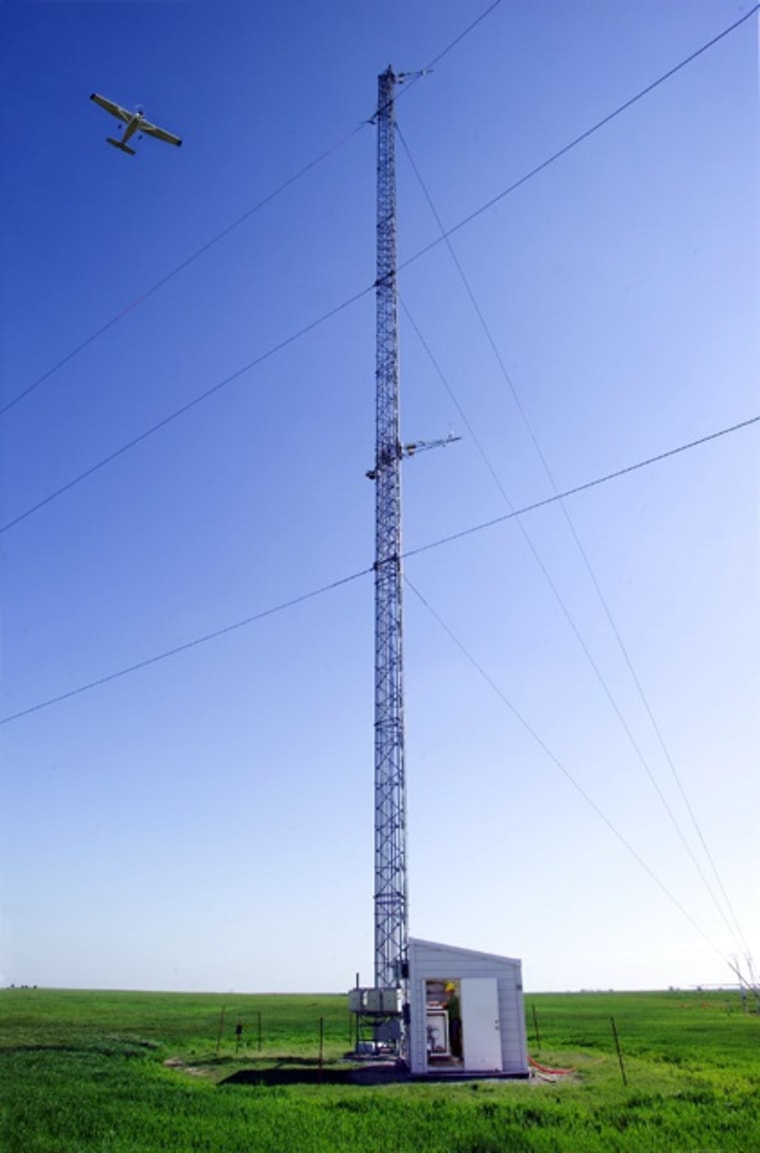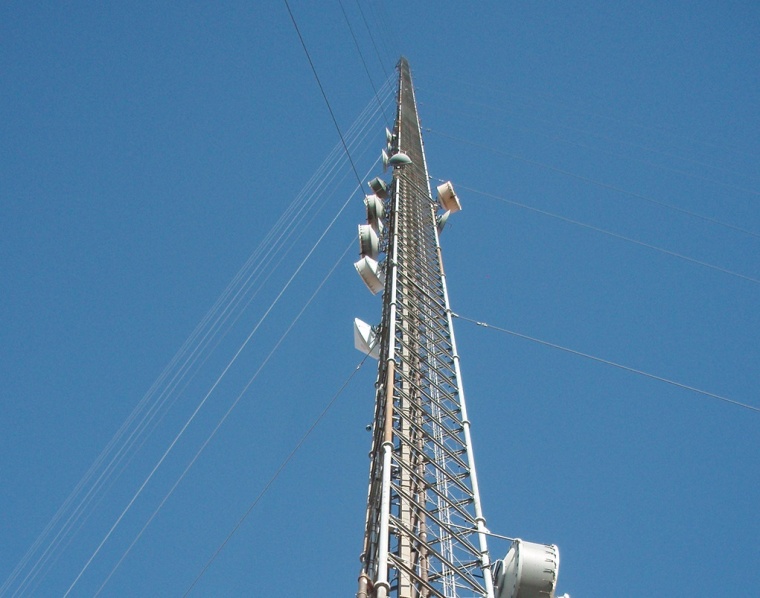
Emissions of the potent greenhouse gas methane from industrial activities in the United States are vastly higher than previous estimates, according to a new study.
"We think our result for the oil and gas sector could be up to five times higher" than figures reported in a widely used international emissions database, Scot Miller, the study's lead author and a graduate student at Harvard University in Cambridge, Mass., told NBC News.
All told, methane emissions in the U.S. appear to be 1.7 times higher than estimated by the Emissions Database for Global Atmospheric Research and 1.5 times higher than reported by the Environmental Protection Agency.
In addition to emissions related to the fossil fuel industry, belching cattle are thought to account for much of the rest of the missing methane. Methane has about 20 times the impact on global climate change than carbon dioxide over a 100-year period, according to the government.
"Overall, we conclude that methane emissions associated with both the animal husbandry and fossil fuel industries have larger greenhouse gas impacts than indicated by existing inventories," Miller and colleagues conclude Monday in the Proceedings of the National Academy of Sciences.
Atmospheric approach
The new research is based on atmospheric methane measurements taken from the top of telecommunications towers that stick more than 1,000 feet into the air as well as from airplanes.
"When we measure methane gas in the atmosphere, we are seeing the sum total contribution of all the emissions that would have happened at the surface," Miller said.
"And if we analyze those measurements very carefully we can get a better understanding of the total amount of methane that comes from a large region, or say comes from the United States," he added.
That's different than the Environmental Protection Agency's approach, which is to tally emissions' estimates derived from the number of cows, landfills, wastewater treatment plants, oil and gas wells and refineries.
"What we find," Miller said, "is that our total estimate for the United States does not equal the sum of the parts from the Environmental Protection Agency."
That finding, he and colleagues write in the journal, "casts doubt" on the agency's "recent decision to downscale its estimate of national natural gas emissions by 25 to 30 percent."
'Important contribution'
The study is an "important contribution" to ongoing efforts to inventory methane emissions, David Allen, a chemical engineer at the University of Texas at Austin, who was not involved in the new study but is an expert in measuring emissions, especially from industry.
"Fossil fuel production and processing and animal husbandry are large and complex activities, with a large number of potential sources," he told NBC News in an email. "So, a logical follow-up question is which sources within these sectors are responsible for the emissions."
Allen is lead author of a recent study also in the Proceedings of the National Academy of Sciences that found certain aspects of natural gas production, including the completion of wells with hydraulic fracturing, or fracking, technology, emit less methane than the figures the government uses in its calculations.
Republican senator's James Inhofe of Oklahoma and David Vitter of Louisiana recently cited Allen's study in a hearing calling for the Environmental Protection Agency to revise downward its emissions estimates from the natural gas industry.
Allen's study also found that emissions from certain machinery involved in natural gas production are at least 30 percent higher than reported by the government. Overall, his study concluded, total emissions from natural gas production are similar to the Environmental Protection Agency's estimates.
Belching cows and leaky wells
In addition to emitting methane, the oil and gas industry also emits propane, the same gas used to cook on backyard grills. Cows, however, don't emit propane.
"And it turns out when we measure high methane gas in the atmosphere over Texas and Oklahoma, we also generally measure high propane gas levels," Miller said. "And similarly, if we measure low methane gas, we typically also measure low propane over Texas and Oklahoma."
Emissions estimates in this region — a hotbed of the current energy boom fueled by fracking technology — are about 2.7 times higher than reported by the other existing inventories, Miller and colleagues found.
"So that gives us a hint that the discrepancy we are seeing in the Texas and Oklahoma region may be due, in part, to the fossil fuel industry, particularly the oil and gas industries," he added.
When the team compared their atmospheric measurements over the south-central United States to the international emissions database, which, unlike the government's, is broken out into emissions sources by region, they found their own estimates from the oil and gas industry are nearly five times higher.
While there is a large degree of uncertainty in this finding, Miller noted, the new research could help reconcile differences between the Environmental Protection Agency's estimates of methane emissions from various sources and the total methane observed in the atmosphere.
"Producing accurate and reliable estimates of methane gas emissions in the United States really requires a collaborative effort," Miller said, adding that "ultimately these are different pieces of a much bigger puzzle."
John Roach is a contributing writer to NBC News. To learn more about him, visit his website.
